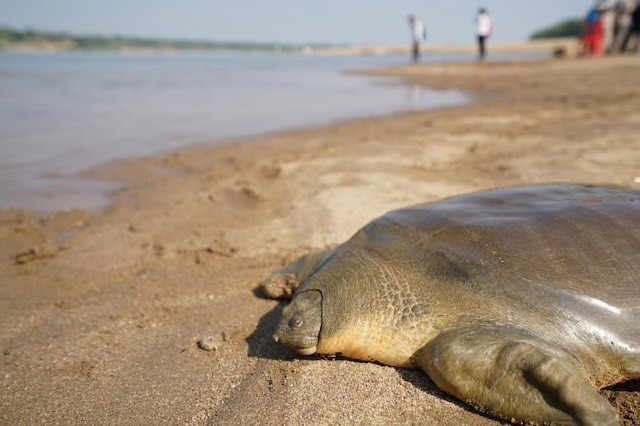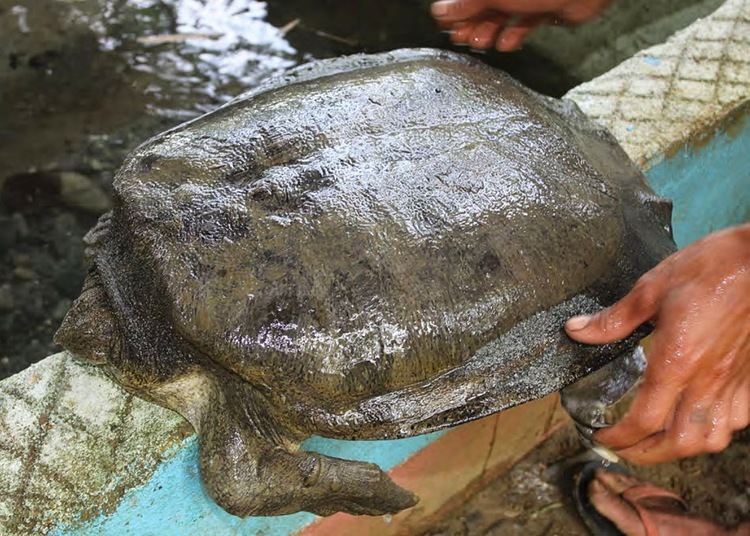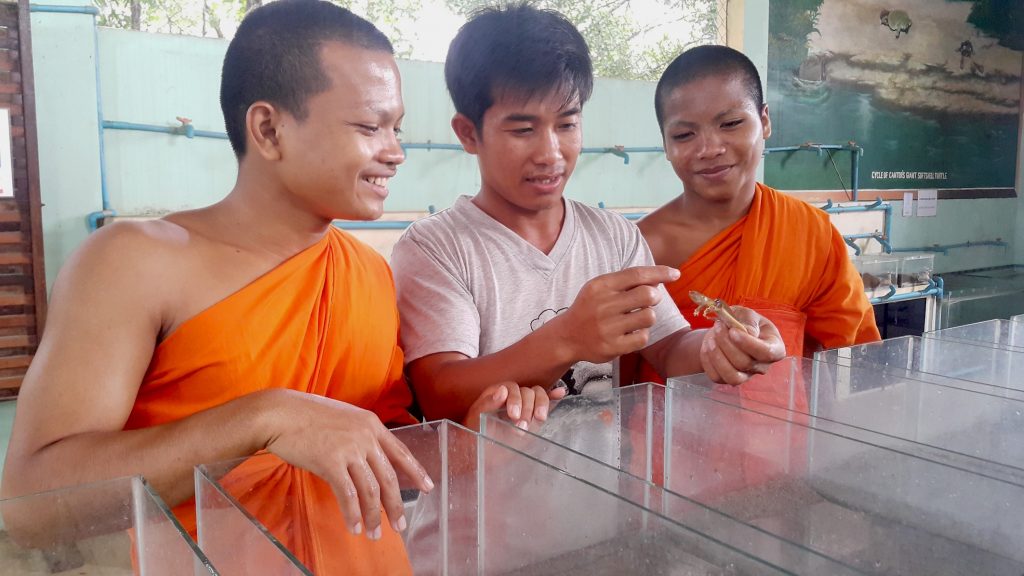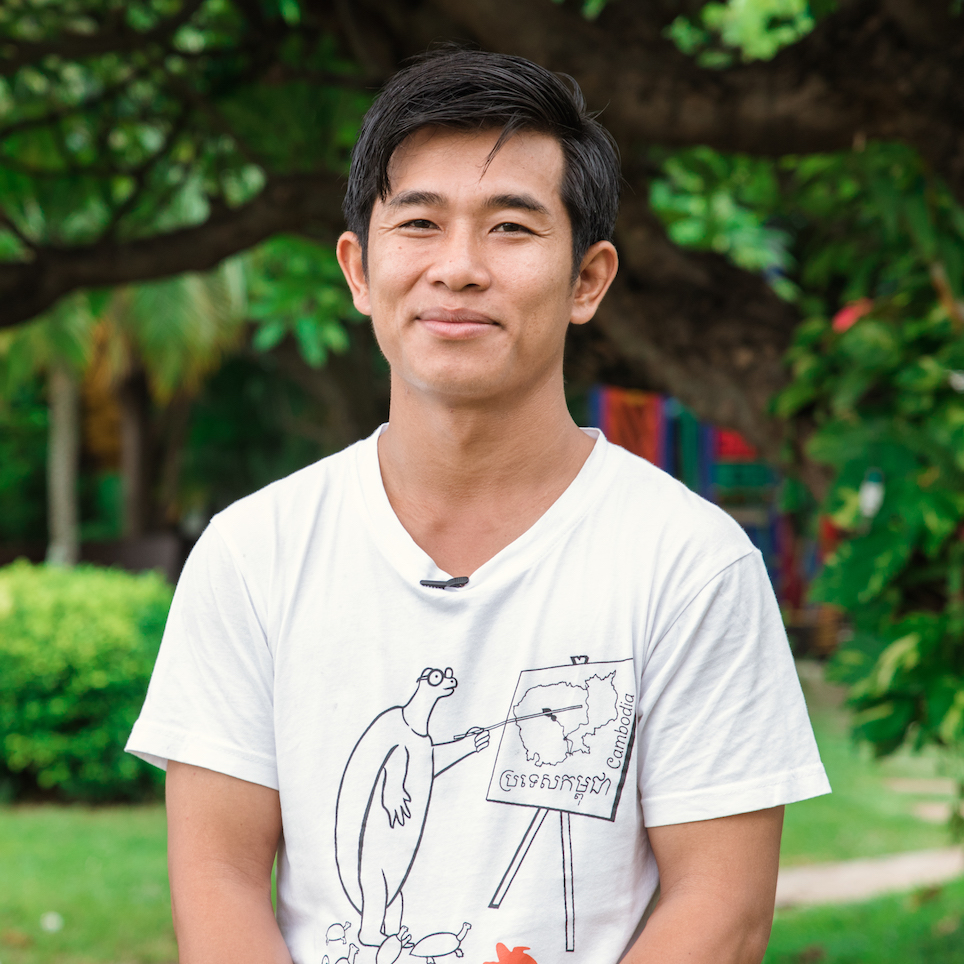It was late 2018 when the owner of a popular restaurant in Kratie, a town in northern Cambodia, got a visit from local fishermen who had caught a live turtle in the Mekong River and were hoping to make a sale. The owner sometimes bought turtles, serving them to customers by special request. But the turtle the fishermen had brought this time was different. For starters, it was huge, weighing 37 pounds. Its broad head and eyes close to the tip of the snout resembled that of a frog. The owner, suspecting it was one of the endangered species he’d been told about, thought for a moment, then agreed to buy the turtle, for $75—not to cook it, but to save its life.

And so it was that the giant turtle ended up at the Mekong Turtle Conservation Center in Sambor, about 20 miles north. When the restaurant owner’s son delivered it, Bran Sinal, who manages the center, immediately recognized it as a Cantor’s giant softshell turtle, an extremely rare species in Cambodia that can grow to the size of a small sofa and live for more than a century. Sinal could also tell that the turtle was a female of breeding age. To lose it would have been a tragedy.
For the next three months, Sinal cared for the turtle at the center. Then, on a Friday morning, he and a large group of people, including local officials, villagers, and students, gathered on a pristine beach on the island of Kaoh Trong, in the middle of the Mekong, near where the turtle had been captured, to return it to the river. After two Buddhist monks recited a prayer, the turtle was placed on the ground. It instinctively began digging into the sand to hide. Leaving it there wouldn’t have been a good idea, so the turtle was again picked up and this time released into the water. As it swam away, the students applauded.

“This is a special occasion,” said Sinal afterwards. “It is the first time we have released a broodstock [of this species] back into the wild, so it’s a very good sign.”
Bran Sinal is the manager of the Mekong Turtle Conservation Center, he’s in charge of all activities including conservation, taking care of the turtles, center development, and partnerships. He guides the local and international tourists who visit the centre, prepares and disseminates educational programs to students and communities so they can understand and take part in the protection of this endangered species. He also takes care of all the turtles that are donated by the villagers, especially to release the turtles back to their natural habitats.

“My love for these animals grows stronger day by day – they are very gentle and never harm us. I like that I can take care of and raise the animals, and at the same time, I can teach the younger generation to understand the conservation and protection of turtles and softshell turtles, and their specific biology. There are not a lot of experts on these species, especially the Mekong softshell turtle, so if I don’t share this information with the younger generation, it would be a waste”, he shared.
Bran Sinal is a 2018-2019 Mekong Conservation Hero selected by the Wonders of the Mekong project.
According to nationalgeographic.com and mekongfishnetwork.org












